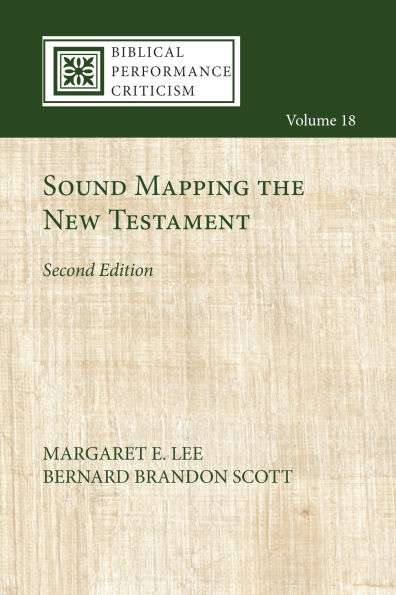In the ancient world, writings were read aloud, heard, and remembered. But modern exegesis assumes a silent text. According to Margaret Lee & Brandon Scott, the disjuncture between ancient and modern approaches to literature obscures the beauty and meaning in writings such as the New Testament. Further, the structure of an ancient Greek composition derives first from its sounds and not from the meaning of its words. They argue that sound analysis, analysis of the signifier and its audible dimension, is crucial to interpretation. Sound Mapping the New Testament explores writing technology in the Greco-Roman world, then turns to ancient Greek literary criticism for descriptions of grammar as a science of sound and literary composition as a woven fabric of speech. Based on these perspectives and a close analysis of writings from the four gospels, Paul, and Q, Sound Mapping the New Testament advances a theory of sound analysis that will enable modern readers to hear the New Testament afresh. The second edition reprints the first edition with a new introduction that reviews a decade of sound mapping scholarship and argues for the continued necessity of sound mapping for New Testament interpretation.
1142100210
Sound Mapping the New Testament, Second Edition
In the ancient world, writings were read aloud, heard, and remembered. But modern exegesis assumes a silent text. According to Margaret Lee & Brandon Scott, the disjuncture between ancient and modern approaches to literature obscures the beauty and meaning in writings such as the New Testament. Further, the structure of an ancient Greek composition derives first from its sounds and not from the meaning of its words. They argue that sound analysis, analysis of the signifier and its audible dimension, is crucial to interpretation. Sound Mapping the New Testament explores writing technology in the Greco-Roman world, then turns to ancient Greek literary criticism for descriptions of grammar as a science of sound and literary composition as a woven fabric of speech. Based on these perspectives and a close analysis of writings from the four gospels, Paul, and Q, Sound Mapping the New Testament advances a theory of sound analysis that will enable modern readers to hear the New Testament afresh. The second edition reprints the first edition with a new introduction that reviews a decade of sound mapping scholarship and argues for the continued necessity of sound mapping for New Testament interpretation.
51.0
In Stock
5
1

Sound Mapping the New Testament, Second Edition
434
Sound Mapping the New Testament, Second Edition
434Paperback(2nd ed.)
$51.00
51.0
In Stock

Product Details
| ISBN-13: | 9781532681745 |
|---|---|
| Publisher: | Cascade Books |
| Publication date: | 08/22/2022 |
| Series: | Biblical Performance Criticism , #18 |
| Edition description: | 2nd ed. |
| Pages: | 434 |
| Product dimensions: | 6.00(w) x 9.00(h) x 0.97(d) |
About the Author
What People are Saying About This
From the B&N Reads Blog
